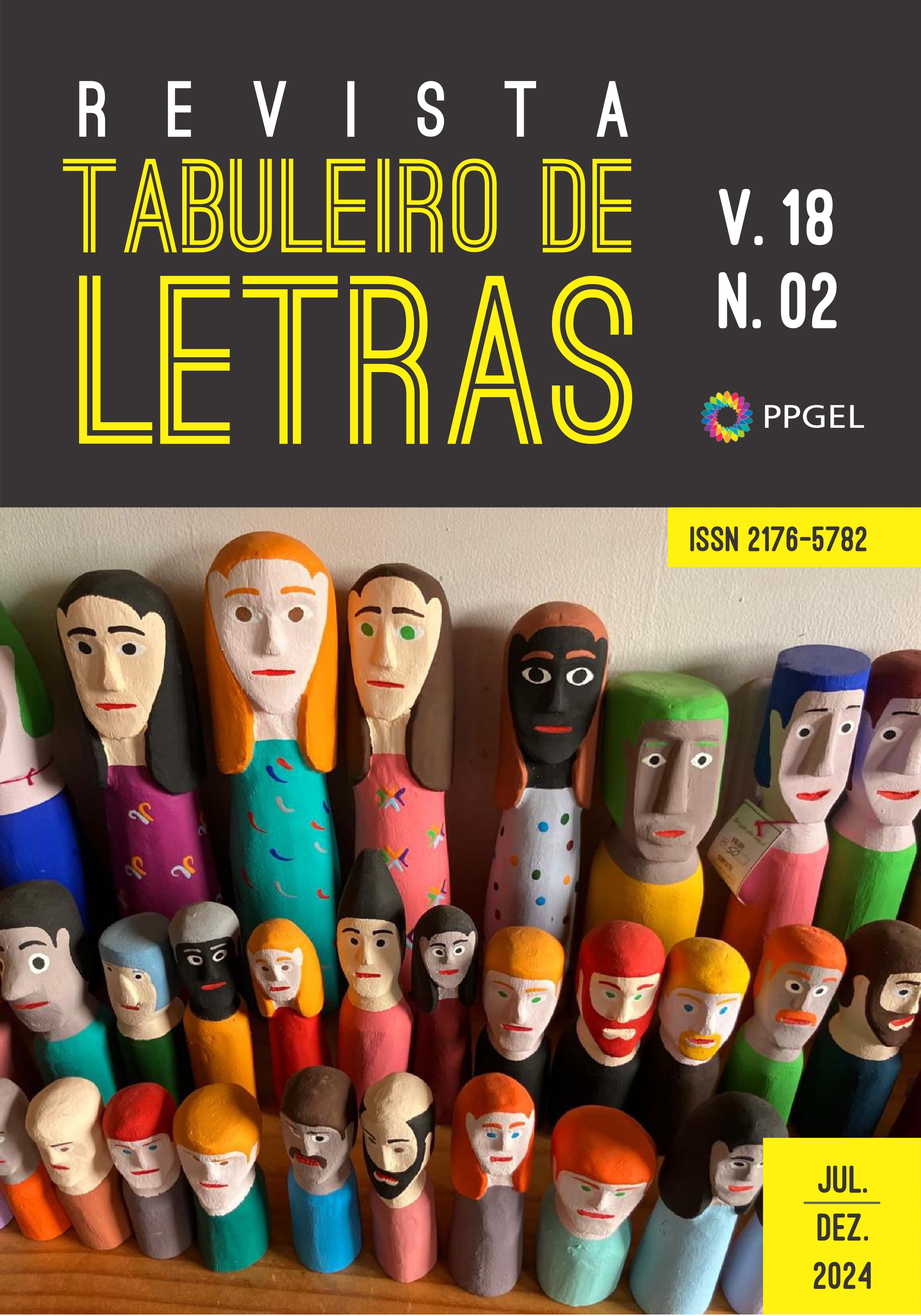Language policies and revitalization
o case of Mirandese language in contact with Portuguese
DOI:
https://doi.org/10.35499/tl.v18i2.20873Abstract
This exploratory qualitative study presents a review of the linguistic landscape in Terra de Miranda (Portugal), focusing on the situation of the Mirandese language and its contact with European Portuguese. We approach Mirandese as an endangered language from the perspective of linguistic and social analysis, also discussing the context of minority languages and existing language policies. Furthermore, we reflect on the interaction between Mirandese and Portuguese and propose possible revitalization policies. The results indicate that the intense contact of Mirandese with the dominant language (Portuguese) and its geographical confinement to small villages and rural areas require more robust linguistic and educational policies, as well as other unofficial actions, for the preservation and revitalization of the language.
keywords: Language policies; Minority languages; Contact languages; Revitalization; Mirandese language.
Downloads
References
MERLAN, A. El mirandés: situación sociolingüística de una lengua minoritaria en la zona fronteriza portugueso-española. Oviedo: Academia de la Llingua Asturiana, 2009.
BENTON, R.; BENTON, N. Revitalizing the Maori Language. Wellington: New Zealand Council for Educational Research, 2001.
BRANDÃO, C. A. Empréstimos linguísticos e intercâmbio cultural. São Paulo: Editora XYZ, 2022.
CONSEJO DE EUROPA (1992). Carta Europea de las Lenguas Minoritarias o Regionales, 1992. Disponível em: https://cutt.ly/PmkBFZZ Acesso em: 03 de ago. de 2023.
CRYSTAL, D. Language Death. Cambridge: Cambridge University Press, 2000.
DORIAN, N. C. Investigating Obsolescence: Studies in Language Contraction and Death. Cambridge: Cambridge University Press, 1989.
FERREIRA, M. B. Em torno da Convenção ortográfica da língua mirandesa. In: MEIRINHOS, J. F. (org.). Estudos mirandeses: balanço e orientações. Porto: Editores e livreiros, 2000, p. 55-68.
FISHMAN, J. Reversing Language Shift: Theoretical and Empirical Foundations of Assistance to Threatened Languages. Clevedon: Multilingual Matters, 1991.
GARCÍA-MARÍN, D.; IBÁÑEZ-ALCÁZAR, A. Las lenguas minoritarias en la Sociedad de la Información. Cartografía, revitalización y aprendizaje del aragonés en entornos virtuales. Ámbitos. Revista Internacional de Comunicación, Montilla, n. 55, p. 98 – 113, 2022.
GIL, A. C. Como elaborar projetos de pesquisa. São Paulo, Atlas, 2019.
GROSJEAN, F. Life with Two Languages: an introduction to bilingualism. Cambridge: Harvard University Press, 1982.
HAGÈGE, C. On the Death and Life of Languages. New Haven: Yale University Press, 2009.
HERMAN, E. Code-Switching: Linguistic and Social Perspectives. Porto Alegre: Editora PUC, 2015.
HOLM, J. An Introduction to Pidgins and Creoles. Cambridge: Cambridge University Press, 2000.
SPOLSKY, B. The Languages of Israel: Policy, Ideology and Practice. Clevedon: Multilingual Matters, 2004.
MARTINS, C. Línguas em Contacto, “saber sobre” o que as distingue. Coimbra: Imprensa da Universidade de Coimbra, 2008.
MOURINHO, A. M. A língua mirandesa como vector cultural do Nordeste português. In: Actas das 1as Jornadas de Língua e Cultura Mirandesas. Miranda do Douro: Câmara Municipal de Miranda do Douro, 1987, p. 75-87.
MOSELEY, C. (ed.). Atlas de las Lenguas del Mundo en Peligro. UNESCO, 2010.
MUFWENE, S. S. The Ecology of Language Evolution. Cambridge: Cambridge University Press, 2001.
OVIDE, E. Desde la diversidad hacia la desigualdad: ¿destino inexorable de la globalización? Revista Electrónica Teoría de la Educación: Educación y Cultura en la Sociedad de la Información, v. 9, n.2, p. 5-18, 2008. Disponível em: https://cutt.ly/zmk52Mn Acesso em: 05 de jun. de 2024
PORTUGAL. Lei n.º 29/99, de 29 de janeiro. Reconhecimento oficial de direitos linguísticos da comunidade mirandesa. Diário da República — I Série-A, n.º 24, 29 jan. 1999. Disponível em: <https://files.dre.pt/1s/1999/01/024a00/05740574.pdf>. Acesso em: 03 jun. 2024.
RICENTO, T. An introduction to Language Policy: theory and method. Malden: Blackwell Publishing, 2006.
RAJAGOPALAN, K. Política linguística: do que é que se trata, afinal? In: NICOLAIDES, C. et al. (org.). Política e políticas linguísticas. Campinas: Pontes Editores, 2013. p. 19-42.
RAPOSO, D. A. G. Vitalidade, valor e estudo da língua mirandesa. In: Actas das 1as Jornadas de Língua e Cultura Mirandesas. Miranda do Douro: Câmara Municipal de Miranda do Douro, 1987, p. 55-59.
THOMASON, S.; G. Language Contact: an introduction. Washington, D.C.: Georgetown University Press, 2001.
VASCONCELLOS, J. L. Estudos de Philologia Mirandesa. Lisboa: [Editora], 1884.
VIANA, G. Estudos de Philologia Mirandesa. Lisboa: Typographia da Academia Real das Sciencias, 1884.
UNESCO. Vitalidad y peligro de desaparición de las lenguas. París: Unesco, 2003. Disponível em: http://unesdoc.unesco.org/images/0018/001836/183699S.pdf Acesso em: 10 de jul. de 2024.
Downloads
Published
How to Cite
Issue
Section
License
Autor(es) conservam os direitos de autor e concedem à Revista o direito de primeira publicação, com o trabalho simultaneamente licenciado sob a Licença Creative Commons Attribution que permite a partilha do trabalho com reconhecimento da autoria e publicação inicial nesta Revista.

















